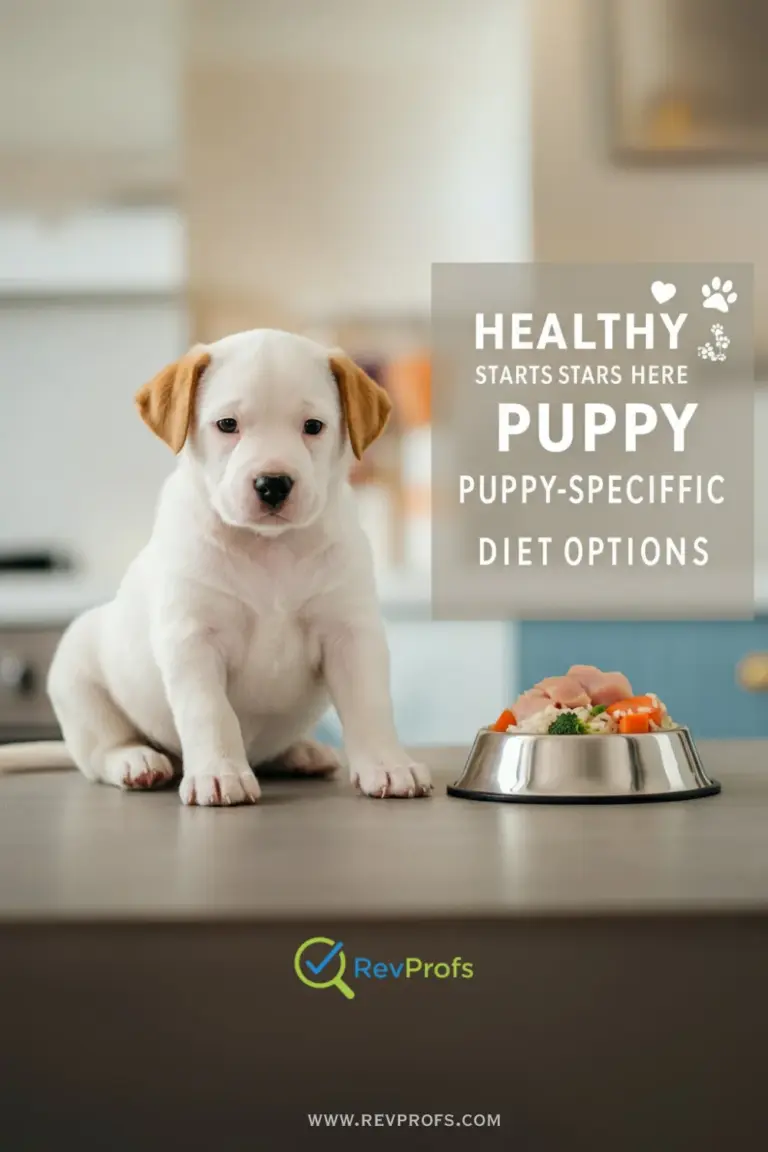How Long Do Puppies Eat Puppy Food? The #1 Ultimate Guide
As a new puppy parent, you’re likely watching your furry friend grow at an astonishing speed. With every playful pounce and sleepy cuddle, you’re doing your best to provide everything they need. This often leads to one of the most common questions we hear: how long do puppies eat puppy food? It’s a fantastic question, and the answer is key to setting your companion up for a lifetime of good health. The short answer is that most puppies should eat puppy food until they are close to their full adult size, which can be anywhere from 9 to 24 months, depending on their breed.
This isn’t a one-size-fits-all timeline, and that’s what we’re here to clear up. In this guide, we’ll walk you through why puppy-specific nutrition is so important, how to determine the exact right time to switch foods based on your dog’s size, and the best way to make that transition smooth and easy for your pup’s sensitive tummy.

Why Puppy Food is Crucial for Growth
Before we get into the “when,” let’s explore the “why.” Why can’t a puppy just eat adult dog food? Think of your puppy as a tiny construction site that’s operating 24/7. Their body is rapidly building everything from strong bones and lean muscles to complex organs and a developing brain. To fuel this incredible project, they need a very specific set of blueprints and materials, which come directly from their food. Puppy formulas are designed to be the perfect nutritional package for this intense period of development.
The Unique Nutritional Needs of a Growing Puppy
Adult dog food is formulated for maintenance—to keep a fully grown dog healthy. Puppy food, on the other hand, is formulated for growth. Here’s what makes it so different:
- Higher Calorie Density: Puppies burn through an immense amount of energy. They may require up to twice the number of calories per pound of body weight compared to an adult dog. Puppy food is packed with these extra calories to fuel their high-energy play and rapid growth.
- More Protein: Protein is essential for building new tissues, muscles, and organs. To support this, puppy food contains higher levels of high-quality protein than adult formulas.
- Specific Mineral Balance: The ratio of calcium and phosphorus is critically important for skeletal development. Puppy food is carefully balanced to ensure bones grow strong and correctly. An improper balance, especially in large breed puppies, can lead to serious orthopedic problems later in life.
- Essential Fatty Acids: Nutrients like DHA (docosahexaenoic acid), an omega-3 fatty acid, are vital for healthy brain and eye development. You’ll find these added to most high-quality puppy foods to give your pup a cognitive edge.
Feeding adult food too early can deny your puppy these critical nutrients, potentially leading to developmental issues, a weaker immune system, and poor bone health.
How Long Do Puppies Eat Puppy Food? A Breed-Size Breakdown
The single most important factor determining when to switch from puppy food to adult food is your dog’s expected adult size. Smaller dogs mature much faster than larger ones. Here is a general timeline to help you figure out when to switch your puppy to adult food.
Small Breed Dogs (Up to 20 lbs Adult Weight)
- Examples: Chihuahuas, Pugs, Shih Tzus, Jack Russell Terriers
- Transition Timeline: 9 to 12 months
Small breed dogs have a fast metabolism and reach their full adult size relatively quickly. You can typically begin transitioning them to an adult formula designed for small breeds around their first birthday, or slightly before.
Medium Breed Dogs (21-50 lbs Adult Weight)
- Examples: Beagles, Border Collies, Australian Shepherds
- Transition Timeline: Around 12 months
Medium-sized dogs follow a more standard timeline. Most are ready to make the switch to adult food right around the 12-month mark. They have completed the majority of their structural growth by this age.
Large and Giant Breed Dogs (Over 50 lbs Adult Weight)
- Examples: Golden Retrievers, German Shepherds, Great Danes, Bernese Mountain Dogs
- Transition Timeline: 18 to 24 months
This is where paying close attention is most critical. Large and giant breeds take much longer to mature, and their skeletal development is a slow, prolonged process. Switching them to adult food too soon can be detrimental. Many veterinarians recommend keeping them on a large-breed-specific puppy formula until they are at least 18 months old. For giant breeds like Great Danes, this can extend to a full two years. For more details, you can read our Guide to Large Breed Puppy Nutrition.
Making the Switch: A Step-by-Step Guide to Transitioning Foods
Once you’ve determined it’s the right time, you can’t just swap the food overnight. A sudden change in diet is a recipe for digestive upset, including vomiting, diarrhea, and gas. The key is a slow and gradual transition over 7-10 days.
This measured approach gives the healthy bacteria in your dog’s gut time to adapt to the new ingredients. Here is a simple schedule to follow:
- Days 1-3: Mix 25% new adult food with 75% old puppy food.
- Days 4-6: Adjust the ratio to 50% new food and 50% old food.
- Days 7-9: Mix 75% new food with 25% old food.
- Day 10: Feed 100% new adult food.
This pace works for most dogs, but if your pup has a particularly sensitive stomach, you can extend the process over 14 days.
What to Watch For During the Transition
As you transition your dog’s food, keep a close eye on their behavior and their stool. This is the best way to know if the new food agrees with them.
Signs of a Successful Transition
- Consistent Energy Levels: Your dog should remain active and playful.
- Healthy Appetite: They should be excited to eat the new food mixture.
- Firm, Healthy Stools: Stools should be well-formed and easy to pick up. A slight change in color is normal, but the consistency should be good.
- Healthy Skin and Coat: The new food should support a shiny coat and healthy skin without any new signs of itchiness.
Signs of Trouble
If you notice any of the following, it might be a sign that the transition is happening too quickly or that the new food isn’t the right fit:
- Diarrhea or Loose Stools: This is the most common sign of digestive upset.
- Vomiting or Regurgitation:
- Loss of Appetite:
- Excessive Gas:
- Itchy Skin or Hives: This could indicate a potential food sensitivity or allergy.
If you see mild digestive upset, go back to the previous food ratio for a couple of days before trying to move forward again. If the symptoms are severe or persist, it’s best to stop the transition and consult your veterinarian. They can help determine if there’s an underlying issue or recommend a different adult formula. For trusted information on pet nutrition, the American Kennel Club (AKC) provides excellent resources. If you are ever in doubt, the best course of action is always to consult a professional. For more details, you can read our What to Do If Your Dog Has a Sensitive Stomach.
Your Partner in Lifelong Health
Knowing how long to feed puppy food is more than just a date on a calendar; it’s about understanding your dog’s unique developmental journey. By providing them with nutrient-dense puppy food for the appropriate duration, you are giving them the essential building blocks for a strong, healthy, and happy life.
Enjoy this exciting stage of growth. Paying close attention to your puppy’s nutritional needs now is one of the best expressions of love you can give, paving the way for many years of joyful companionship.
Ready for the Next Step?
Your pet's journey doesn't end here. Explore our expert guides to ensure they get the best care at every stage.
Puppy & Dog Care
From choosing the right food to understanding their behavior, our dog care guides cover everything you need to know.
Explore Dog GuidesGear & Product Reviews
Find honest, in-depth reviews on the latest pet gear, from smart collars to durable toys, and make informed decisions.
See All Reviews

